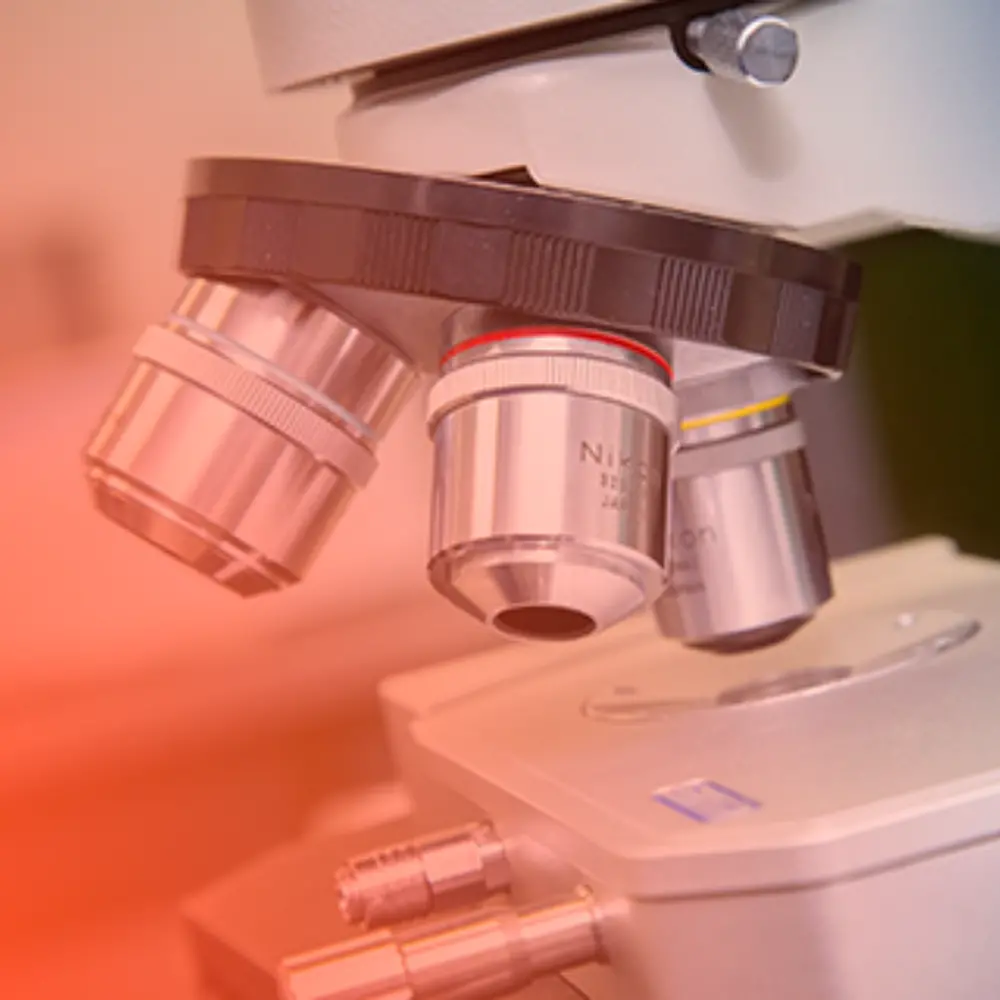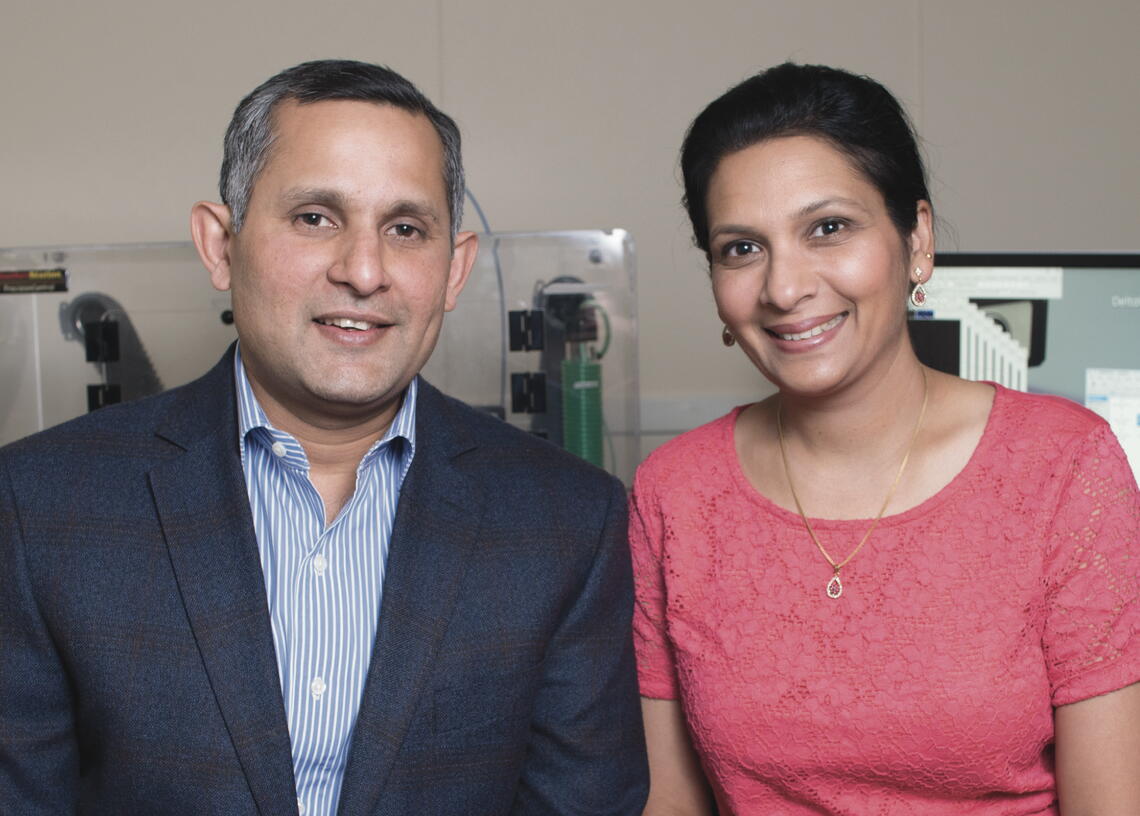
Within a month after Prasanth and Supriya were married in India in December of 2000, they flew to New York City, landing in a city blanketed with heavy snow. It was the first time either one of them had ever seen snow.
They began a new life as postdoctoral researchers at Cold Spring Harbor Laboratory in New York. And today, as University of Illinois CDB professors, they continue to work side by side — literally. Their respective labs are next to each other in the Chemical and Life Sciences Building, where they probe the mysteries of DNA replication and gene expression.
Supriya and Prasanth grew up on opposite ends of India, for she lived in Delhi in the north while he grew up in Kerala in the south. They met when she attended a short program sponsored by the Indian government at the lab where he was a graduate student.
“We’ve been collaborating since 2001,” says Supriya, referring to the year they began at Cold Spring Harbor. There, Supriya did her postdoc under Bruce Stillman, a father figure in the field of DNA replication, while Prasanth worked with David Spector, who has done groundbreaking research on the inner workings of a cell nucleus.
The Prasanths’ collaboration continued when they came to Illinois in 2007, with Supriya bringing her biochemistry expertise to the table, while Prasanth contributes his training as a cell biologist. It’s not unusual for husbands and wives to be recruited to the same institution, but it isn’t often that they work so closely together—and on the very same floor.

“In this new age of science, you cannot survive with only one technical discipline,” Prasanth says. “It has to be integrated,” and that means combining their strengths. “The way our collaboration works is our two labs have their own individual projects, but the students function as a single unit,” adds Supriya. “The students all work together, helping each other out, and we run joint lab meetings.”
Supriya’s lab explores how cells coordinate the process of DNA replication, while Prasanth has been investigating the role of long non-coding RNA in gene expression control. Supriya’s lab had its first big breakthrough in 2010 when they identified the ORC-associated protein, or ORCA/LRWD1.
These proteins stabilize Origin Recognition Complex (ORC) proteins on chromatin and help initiate DNA replication and aid in chromatin organization.
However, Supriya’s lab has found that ORC and ORCA proteins have a role beyond just initiating DNA replication; they regulate many different aspects of the cell cycle. For instance, ORC plays a role in the process of DNA replication itself, as well as plays critical roles in centromere and centrosome biology and cell division.What’s more, her lab found that ORCA proteins play a fundamental role in heterochromatin organization, compacting the DNA. And most recently, they discovered that both ORC and ORCA bind to telomeres, which protect the ends of chromosomes, preventing DNA damage.
“One of my graduate students discovered that the enrichment of ORC and ORCA is happening at very specific types of telomeres,” Supriya says—a finding that may have cancer implications.
In normal cells, telomeres shorten over time, which limits the lifespan of cells and prevents them from becoming cancerous. But in some cancers—less than 15 percent—the cells manage to achieve immortality by continually lengthening the telomeres. One way cancer cells do this is through a mechanism called alternative lengthening of telomeres, or ALT.
“So what exactly are ORC and ORCA doing at ALT telomeres?” Supriya asks. “Do they have a role in DNA repair? That is something we are actively pursuing at this time.”
Prasanth’s lab has been assisting Supriya’s team with the telomere research, but he says his wife’s lab has been similarly helping his team with their work on long non-coding RNA.
In 2010, Prasanth’s lab published a paper showing the involvement of a cancer-associated long noncoding RNA known as MALAT1 in regulating the activity of a subset of oncogenic SR family of pre-mRNA splicing factors in human cells.
Later in 2016, his laboratory demonstrated that when MALAT1 is overexpressed in breast cells, the cells form tumors, and when MALAT1 is depleted in breast cells, the cells lose the properties necessary to produce tumors.
“MALAT1 is also present in normal cells, operating under normal conditions, so maybe cancer cells are exploiting this to their own benefit,” he says. “That’s why cancer cells are addicted to high levels of MALAT1.”
A normal cell has about 2000 to 3,000 copies of MALAT1 in its nucleus, but a cancer cell shows a two to threefold increase in the copy number of MALAT1, “and that completely changes the dynamics,” he says. With so many copies at work, MALAT1 influences the activity of more SR proteins in the cell than normal, and the SR proteins, in turn, splice pre-mRNAs of genes that have the potential to cause cancer.
“It’s like a puzzle,” Prasanth says. “MALAT1 interacts with the SR protein here, and you have the splicing of oncogenic pre-mRNAs there.We’re now trying to identify those oncogenic genes whose pre-mRNA splicing is regulated through MALAT1 and SR proteins.”
According to Supriya, there is considerable intellectual collaboration between their respective labs, but they also supply skills and knowledge that the other needs. For instance, Supriya uses her expertise in the cell cycle to assist Prasanth’s work on the role of long non-coding RNAs in cell cycle progression.
Because Prasanth’s and Supriya’s labs work together so closely, it’s inevitable that scientific discussions continue over their kitchen table back at home. They have a 10-year- old son, and Prasanth says, “Let me put it this way. Our son knows all about MALAT1 and ORCA. But sometimes we have to make a deliberate decision not to be talking science all the time and talk about soccer instead.”

